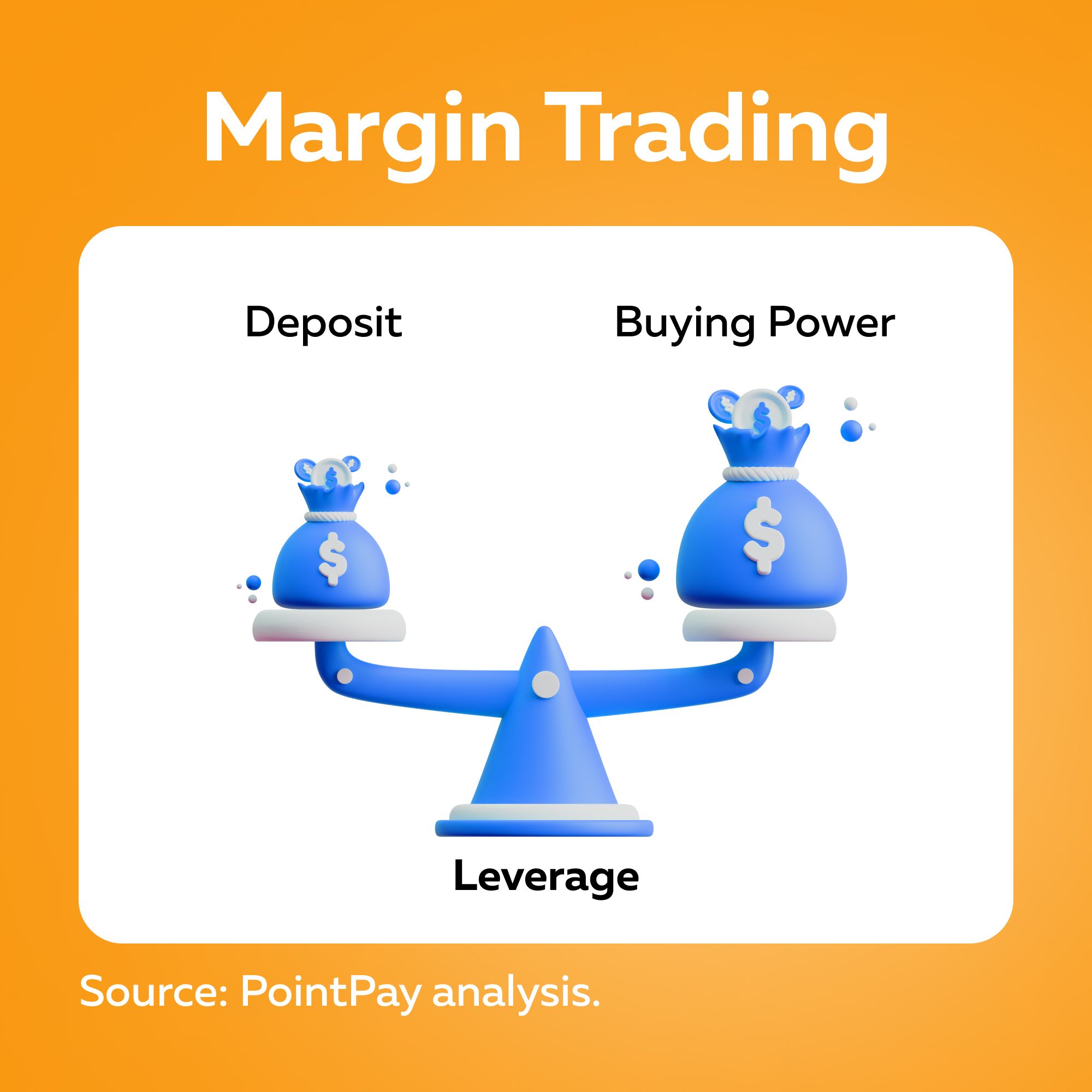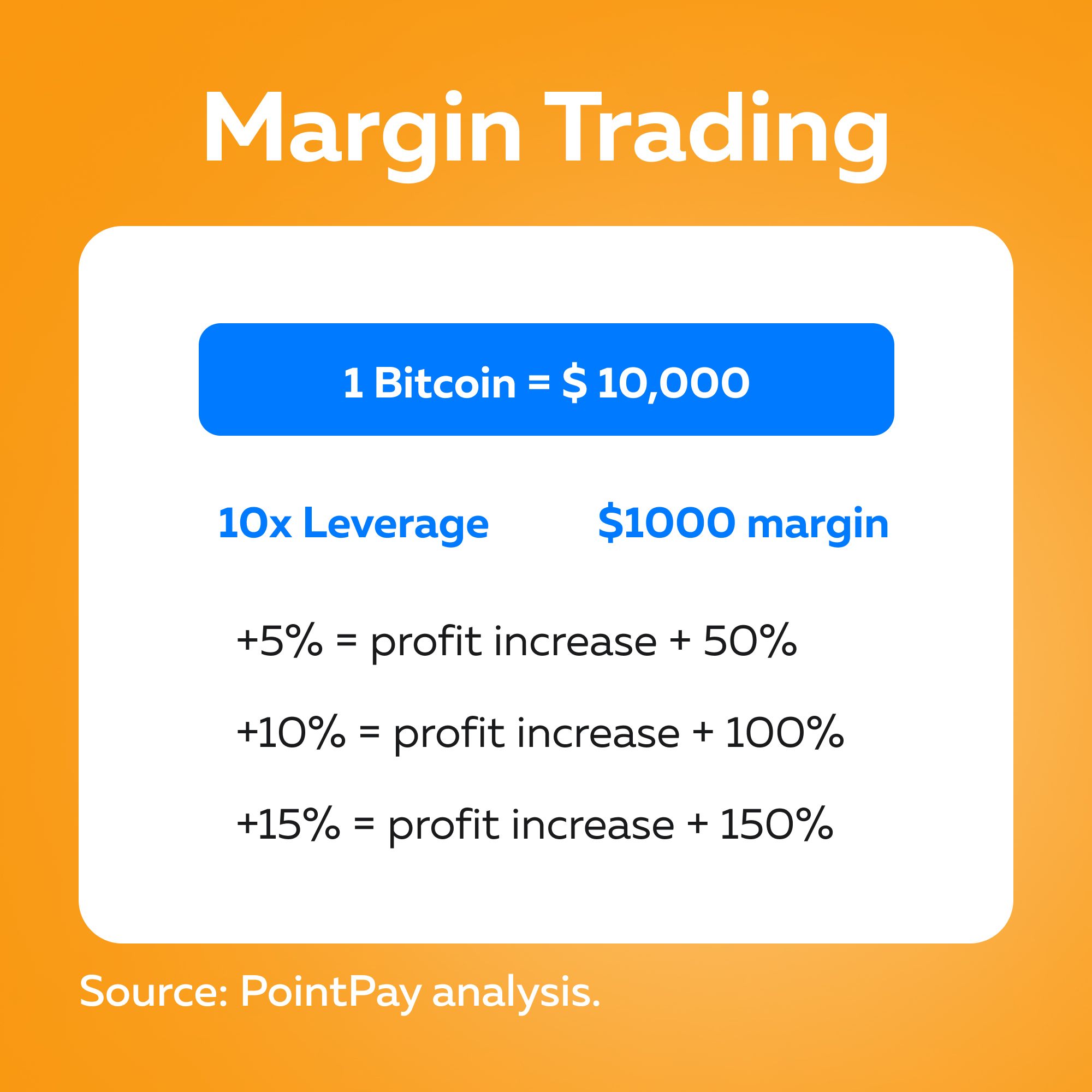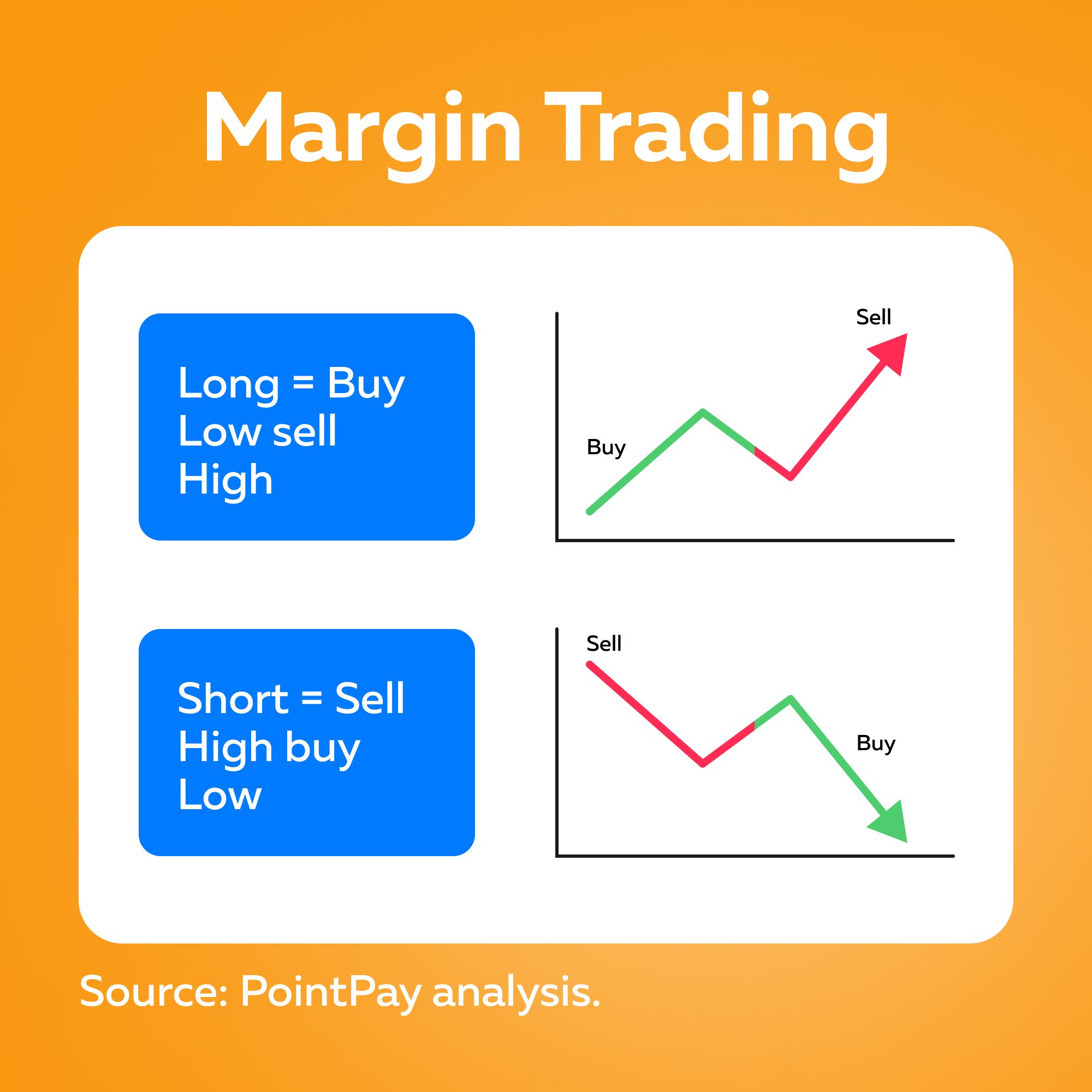Margin trading has been around for centuries. In the late 1800s, margin trading didn’t look much like what we know today. Investors could put down very little of their own funds, and brokers allowed this. Leverage rates of up to 90% were common—but this became disastrous when the market fell in the 1929 crash.
Since the early 1900s, buying on margin has changed substantially. The need for regulation and stricter requirements has transformed the industry into what we have today. Margin trading on cryptocurrency has become immensely popular in the past three or four years. Let’s understand exactly what margin trading means and how it works.
What is Margin Trading?
Margin trading, also known as leverage trading, is borrowing funds from a third party to increase the position size that you would normally be able to trade. Margin trading can magnify both your wins and losses, which is why one should be very careful when borrowing assets.
Different cryptocurrency exchanges have variations in rules of the number of funds a trader can borrow. Still, they all follow the same principle, that is, to allow a trader to open a bigger position with less capital used. Every time you use margin trading, you put a specific amount from your funds as collateral.
Let’s see how it works in the example:
Imagine a person named John has a total of 1000$ in BTC in his wallet but wants to open a bigger position using margin trading. He will have to put some of his funds as collateral to be able to borrow more for his position. The amount of collateral the third party holds depends on the leverage he wants to use. The collateral can be as low as 1% of the position size.
Margin is the amount of a trader’s own funds that are required to open a position.
The smaller the position, the less margin will be used from the account balance to open positions.
Leverage is the ratio and reflects the amount of a trader's own funds (margin) required compared to the size of the position the person wishes to open. (1:100, 1:20, 1:50)
For example, with 1:200 leverage, a trader will only need 0.005 BTC of the personal funds (Margin) to trade 1 BTC.

Another clear example of how margin trading works:
Let’s say this time John wants to buy $100,000 worth of bitcoin but only has $2,000 in his trading account. With a 1:100 leverage, the required margin would be 1% of his position size, $1,000 (1% * $100,000). He can trade anything else separately using his remaining $1,000, as it won’t be affected.
Daily traders use margin trading to open long and short positions following market movements. Note that in some platforms, the amount of leverage a trader can take is marked with “x” (5x, 2x) This doesn’t change the concept.
For instance, if the margin is 5x, the exchange will offer you five times your margin amount. Thus, someone who puts in a margin of $5,000 will get a loan of $25,000 for cryptocurrency trading.
Why Trade on Margin?
Unsurprisingly, margin trading has been a massive success within a few years. Even with its risks and drawbacks, margin trading has many offerings:
- Improved profitability
Margin trading can be a powerful tool for traders to gain bigger profits with smart strategies.
If 1 Bitcoin is $10,000 and you take 10x leverage, this will mean if the price of Bitcoin goes up by 5%, the trader’s profit will go up by 50% because of 10x leverage.

- Diversification of a portfolio
If you hold diverse assets in your portfolio, you can use some for your margin “loan” to increase your profit possibilities. This way, along with your regular tradings, you put your other assets to good use. - Profit from Long and Short positions
You can open long or short trading positions with margin trading, which means that you are fully prepared for both bull and bear markets.
A short position means selling an asset (opening the position) at a high price to re-buy the asset (closing the position) at a lower price.
A long position - is the process of buying an asset (opening a position) at a low price with the intent to resell the asset (closing a position) at a higher price.

What is a Margin Call
The name “margin call” comes from an “actual call” investors would get from their brokers or third parties that they took the “loan.” In the decentralized world, platforms do it automatically, and no call is involved.
A margin call occurs when a margin account runs low on funds, usually because of a losing trade. Margin calls are demands for additional capital or securities to bring a margin account up to the maintenance requirement. The maintenance margin amount is different and set by the trading platforms.
Margin calls can be a nightmare for every trader. To avoid them, it is advisable to:
- Use stop-loss orders
Stop-loss orders are good for any situation when you still determine where the market will head up. This way, you can minimize the risks of getting a margin call. - Think twice about position sizing
This is one of the mistakes some traders make. When you are very excited about taking bigger position sizes, you might be tempted to, but be aware of the consequences and check everything before doing so. - Understand leverage
The best way to avoid triggering a margin call is to thoroughly understand what you are getting into. Check all the leverage offers and understand how they work on different platforms.
Risks to Consider when Margin Trading
Please note that there are many risks associated with margin trading.
One of the biggest risks associated is the possibility of losing your capital. If the market takes a sudden turn, you could face great losses. A 50 percent or more decline from half-funded assets using borrowed funds equates to a loss of 100 percent or more in your portfolio, plus interest and commissions.
Margin trading is a flexible way to increase your profits in crypto trading, but it’s not for beginners. Experienced traders can use it to increase their profits, but if they don’t use it properly, they could end up with great losses. Before you start, ensure you have enough expertise to handle the challenges and smooth your way to success.
🔥 Buy PXP tokens on Bittrex: https://bit.ly/32VWsci
🔥 Buy PXP tokens on Bitrue: https://bit.ly/3JEreHu
🔥 Buy PXP tokens on BitHumb: https://bit.ly/3qOK6e9
🔥 Buy PXP tokens on WhiteBIT: https://bit.ly/3qJrjRH
🔥 Buy PXP tokens on CoinTiger: https://bit.ly/3pnv6ny
💰 Earn up to 7% yearly with PXP staking program in PointPay Bank: https://bank.pointpay.io/staking
💡 Check PointPay Live-Roadmap (PointPay development in real-time): https://pointpay.io/live-roadmap/
🏦 Remember, we are PointPay, and we are beyond banking!
